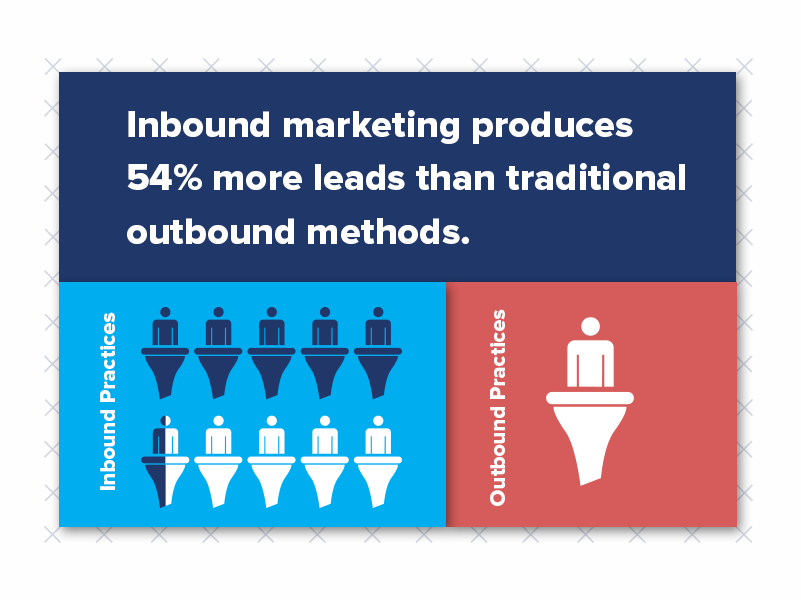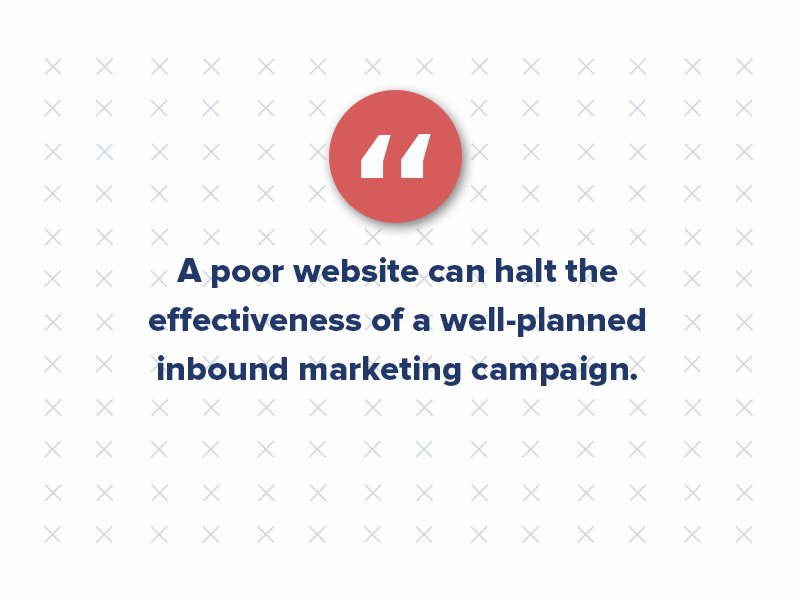What to Expect When Starting an Inbound Marketing Campaign
Today’s marketing has evolved from interruptive tactics to a customer-oriented approach called inbound marketing. This route empowers your customer to be equipped with all the information they may need to decide without feeling like they’re being “sold to” from the first interaction.
In commercial real estate, everything from a property management company to multifamily vendors serving the space needs a marketing tactic that relies on warm leads.
When evaluating whether an inbound marketing campaign is right for your multifamily business, there are a few things to understand first.
Time Is an Investment
The hardest thing for clients to wrap their heads around is the time it takes to get an inbound marketing campaign in full swing. While everyone is looking for instant gratification for their multifamily marketing ROI, we remind our clients that time is an investment. We set expectations early on that inbound marketing isn’t a quick fix, but rather a long-term solution.
Let’s say a multifamily property wants to create buzz during lease-up for three months. A full-funnel inbound approach may not be ideal for this short-term need. A social media marketing strategy may better fit this quick fix. However, if they want to maintain a marketing strategy that identifies prospective residents, targets content, and creates a steady lead nurturing system — inbound marketing may be the ticket.
Inbound marketing is built on steps that can’t be skipped or left out of your strategy. A ramp-up period for inbound may take the three months that the multifamily business above wanted for simply heavy promotional marketing.
Rather than short bursts of promotion, with inbound, you have to build a solid foundation first. If not, your entire inbound marketing campaign process will be working backward to fix the broken links.
However, when you give inbound the time it needs to get the working pieces in place, you start seeing your work pay off.

Consider the following stats from HubSpot, a leading marketing automation software company:
- 92% of companies using inbound marketing increased their traffic, and 40% increased their traffic by at least 75%.
- 85% of companies using inbound marketing increase traffic within 7 months
- Blogging champions as the #1 method for increasing traffic, with SEO in second place
- “Other” inbound marketing techniques (i.e., landing pages and calls-to-action) are ranked the #1 method for increasing leads
- 42.2% of companies using inbound marketing increase their lead-to-sale conversion rate
- 49.7% of companies using inbound marketing increase sales within 7 months

Results Come From Strategy
Like many things in life, you can expect to get out of an inbound marketing campaign what you put into it. When you’re looking to see the magic of inbound marketing in action, you can’t sit back and let it go on its own. It takes constant review, regular planning, and lead nurturing. This could be in the form of ready-to-rent leads showing interest in your property solely by viewing your content and social media.
By not taking shortcuts, you’ll be pleased with the results your campaign brings in. But what takes so much time?
Buyer Personas
The first step is always research. The cornerstone of any inbound marketing campaign is developing buyer personas. Buyer personas are semi-fictional characters representing your ideal resident or customer and going beyond just demographics. Your personas will help target all content and strategy surrounding the campaign. These can take a few months to develop, as it’s important to interview residents to get insight into your target audience.
Keyword Research
Much of the ramp-up period consists of research. Once you know your target, you need to know how you rank for industry-specific jargon your audience uses. For instance, if your business is a real estate investment company, maybe you rank high in search terms for “multifamily investing” or “real estate investment firm.” By using a keyword analysis tool like SEMRush, Ahrefs, or Moz, you can identify how you’re ranking for very specific keywords. You can then optimize the content you create to feature those keywords.
Multifamily Website Design
Before setting up a buyer’s journey for your target resident to navigate online, your website has to be optimized for user experience (UX). A poor website can halt the effectiveness of a well-planned inbound marketing campaign. For instance, if people can’t find the leasing page or have difficulty finding floorplans, they’ll likely lose interest. Do not make your audience hunt for what they are looking for.

Content Mapping
You can plan the content once you’ve researched and optimized your website. You’ll want to create different content types for each stage in the buyer’s journey — awareness, consideration, and decision. Instead of publishing blogs on the fly or posting to social media randomly, plan out your content strategy. This will give your inbound marketing campaign direction, purpose, and organization.
HubSpot Set-Up
HubSpot is an amazingly effective tool for marketing automation. It helps build and automate workflows, email campaigns, social media scheduling, analytics, and more. Setting up your workflows, email templates, and building out social media accounts in HubSpot helps create a solid foundation.
Goals and Analytics
Without this step, there’s no way to assess the performance of the strategy you’ve put in place. Set SMART goals upfront — Specific, Measurable, Achievable, Relevant, and Time-based. Then, establish regular checkpoints to see how your strategy is doing. Tools like HubSpot, Google Analytics, and Klipfolio are great tools for measuring the success of your inbound marketing campaign.

Now that you have the groundwork set, here comes the hard part — staying fully committed and on track with the goals you set. To be successful at inbound marketing, you must have faith. Those willing to let the process work through its entirety will see higher levels of success than those who change direction because they don’t see immediate results. Pausing your efforts or adding multiple layers to your pre-constructed plan will only lessen your impact. Be patient — we can’t stress this enough.
Become the Multifamily Marketing Expert
Inbound is a long, winding road of strategy, testing, retesting, and careful planning. While it may seem overwhelming at first, HubSpot supplies ample resources to teach new customers how to become inbound experts and more!
However, when it comes to being an expert and leader in inbound marketing for your industry, there are options. You can take it on yourself — which will likely be an overwhelming feat. You can hire an in-house inbound marketing expert, leaving the implementation and execution to them. If this isn’t your business’ specialty, you don’t have to go at it alone. You can also leave the heavy lifting to an inbound marketing agency.
As experts in inbound, an outsourced multifamily marketing agency (like Criterion.B) can put a business’ mind to ease by handling the entire process.





